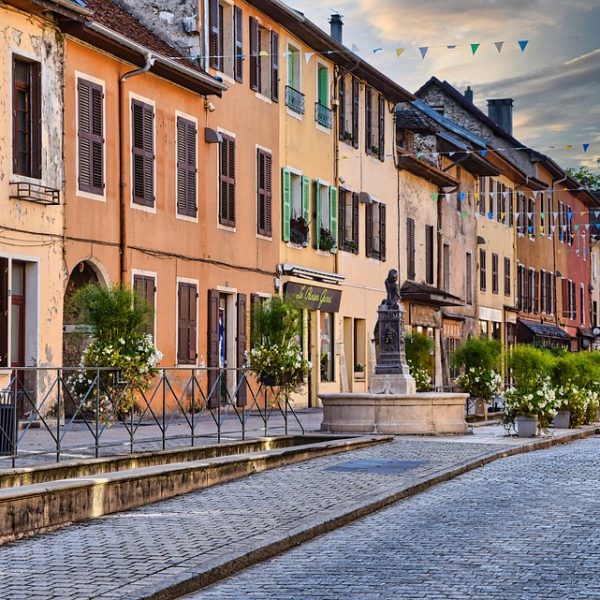
The Rich History of Cobblestone Streets Around the World
Cobblestone streets have a rich and fascinating history that extends across different continents and civilisations.
From ancient Rome to medieval Europe and modern-day United States, these streets have served as important and enduring features of urban landscapes.
The roots of cobblestone streets can be traced back to ancient Rome. The Romans recognized the need for durable and robust roadways to facilitate trade, transportation, and communication within their vast empire. Cobblestones, small natural stones, were carefully arranged to create roads and pathways that could withstand heavy traffic and the test of time. The interlocking nature of the cobblestones ensured stability and minimized the risk of erosion caused by constant use and inclement weather.
Furthermore, cobblestones were employed beyond their utilitarian function. In conjunction with their practical use, the Romans also utilized these stones to establish efficient drainage systems. By lining the sides of roads with cobblestones, they effectively channeled rainwater away from the main thoroughfare, preventing flooding and ensuring safer traveling conditions.
Moreover, the Romans embraced creativity in their use of cobblestones. These stones were skillfully arranged to create intricate and decorative patterns on the streets. These designs not only added aesthetic value but also showcased the architectural ingenuity and attention to detail prevalent during that era. These aesthetically pleasing patterns can still be found in some European cities today, serving as a testament to the artistic legacy of the Romans.
Moving forward to the Middle Ages, cobblestone streets continued to feature prominently in many European cities. At this time, cities were burgeoning centers of commerce and trade, necessitating the development of robust transportation networks. Cobblestones were once again employed as a reliable solution. The cities of the time understood the practical advantages of cobblestone streets, which proved invaluable in withstanding the heavy traffic and congestion characteristic of urban life.
Similar to their predecessors, medieval cities recognized the importance of proper drainage. Cobblestones were arranged, often with a slight incline towards the sides, to facilitate the smooth flow of rainwater away from the main pathway. This innovation helped to prevent the accumulation of stagnant water and the associated health hazards.
Just as in ancient Rome, aesthetics remained an important consideration. Cobblestones were arranged in intricate and visually appealing patterns, contributing to the overall beauty and charm of the city streets. Even today, walking along these well-preserved medieval cobblestone streets is like stepping back in time, immersing oneself in the rich history and architectural grandeur of the era.
Cobblestone streets made their way to the United States in the early 19th century. As cities began to develop and expand, the need for reliable and durable roadways became increasingly pressing. The use of cobblestones provided a practical solution to these growing infrastructure needs. Builders and engineers recognised the strength and longevity of these stones, ensuring the construction of roads and pathways capable of enduring heavy traffic and the challenges imposed by urbanisation.
In addition to their functional qualities, cobblestones retained their decorative appeal. Cities such as Boston, Philadelphia, and San Francisco incorporated cobblestone streets into their urban designs, adding an element of historical charm to their landscapes. The distinctive and rustic appearance of these streets served as a visual reminder of a bygone era.
By the late 19th century, cobblestone streets had become prevalent in many American cities. Their popularity extended beyond their practical advantages, as they came to symbolize a sense of heritage, history, and tradition. Inclusion of cobblestones in urban planning highlighted the importance of preserving and honoring the past while embracing progress and modernisation.
Today, cobblestone streets continue to grace the landscapes of cities worldwide. Their enduring presence serves as a reminder of the craftsmanship and innovation of ancient civilizations and medieval societies. Cobblestones remain an excellent paving option for areas with heavy traffic or historical significance, as they combine functionality and aesthetics in a manner that few other materials can achieve.
Furthermore, cobblestone streets offer pedestrians and motorists alike a unique and enjoyable experience. Walking or driving along these streets provides a distinct sensory encounter, from the gentle rumble of carriage wheels to the textured sensation underfoot. Despite the occasional discomfort caused by uneven surfaces, many consider the charm and character of cobblestone streets to be well worth the minor inconvenience.
As cities adapt and grow in the face of technological advancements and evolving urban landscapes, cobblestone streets hold a significant place in architectural history. These enduring symbols of the past serve as testaments to the artistry, craftsmanship, and practical ingenuity of our predecessors. By preserving and maintaining cobblestone streets, cities around the world commit to honoring their historical legacies while creating unique and memorable experiences for their citizens and visitors alike.
















